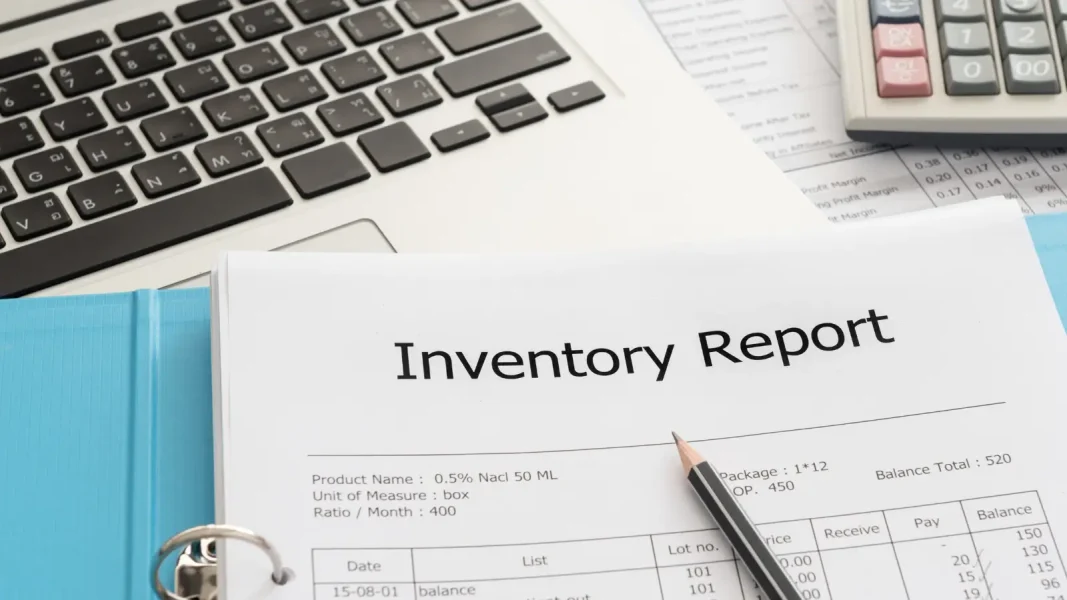Skimming refers to a pricing approach in which a high price is set for a new product or service when it is introduced to the market.
This pricing strategy involves positioning a product at a price significantly higher than the average for comparable products, with the aim of maximizing profits. The term “skimming” has its origins in consumer selection, which occurs naturally when the price is high.
The aim is to attract those consumer segments willing to pay more for the latest and/or most innovative product.
- What are the advantages of this strategy?
- How do you implement it effectively?
Based on the principle that early adopters or passionate consumers are willing to pay a premium price. What’s more, once this first wave of consumers has been satisfied, the company can gradually reduce the price. Thanks to this price reduction, it can attract a wider customer base.
In fact, this price is carefully chosen to reflect the high-end or luxury image that the company wishes to attribute to the product.
This strategy focuses on maximizing margins rather than sales volumes, with the aim of generating higher financial returns.
Pricing strategy & KPI monitoring
Price plays a central role in corporate strategy. It is one of the 4Ps (Product, Price, Place and Promotion) that define a company’s position in its market.
Strategy aimed at setting a higher priceto target a niche of high-income consumers.
This approach is aimed not only at high profitability, but also at customers looking for luxury products or services, considered “premium” or “high-end”. What’s more, thanks to this pricing structure, we now have the opportunity to tap into international markets. becomes viable.
However, for the skimming policy to be effective, it is essential that the high price reflects technological innovation, superior quality or strong brand awareness. Implementing this strategy may require high initial costs.
What is the "pricing policy"?
Pricing policy encompasses the decisions taken to set a price and define the cost of the products and services offered by a company. When determining the price, several factors must be considered, such as :
- The amount the customer is willing to pay, based on their budget, perception of value or psychology,
- The company’s desired level of profitability based on production costs.
The 8 impacts of a skimming strategy on price positioning
1. Maximizing initial profits
By setting a high price at launch, the company can achieve high profit margins. When the product is new or innovative and demand is strong. This strategy allows the company to maximize your margins from the start.
2. PREMIUM POSITIONING
A high price can establish a premium brand image. Consumers often associate higher cost with better quality or high status. The high price helps reinforce the perception of the product as high quality or exclusive.
3. Rapid recovery of R&D costs
For products that require significant investment in research and development, such as drugs or technology. When prices are skimming they can help recover these costs more quickly. This can be particularly beneficial for products that require heavy investment in R&D.
4. Less pressure on production
Sales volume is initially lower with such a pricing strategy. This gives the company time to ramp up in terms of production and distribution.
5. Barrier to entry for competitors
A high price can discourage competitors from entering the market. They might feel that the high-priced segment is already saturated.
6. Demand Optimization
If production capacity is limited at the outset, the cream-skimming policy can help help to avoid excessive demand that cannot be met.
7. Capitalize on early buyers
Early adopters, often less price sensitive, are willing to pay a premium to get the product before others. Implementing a skimming policy takes advantage of this dynamic.
8. Pricing flexibility for the future.
It is generally easier to reduce prices later than to increase them. Once finished, the company can gradually lower its prices. This will allow it to attract new market segments that are more sensitive to price.
Skimming strategy and implementations
Although it is relevant to many fields, must be adapted to the specific sector in question. Some sectors are more conducive to this strategy than others.
IT domain
In this sector, rapid innovations and technological advances mean that consumers are often willing to pay a high price for the latest innovations.
Consumer electronics, such as smartphones and televisions, is an area where this strategy is commonly used.
It works well here because early adopters want access to products before anyone else.
Pharmacy - Health Sector
New drugs, after years of research and clinical trials, can be launched with this type of strategy. Particularly if the medicine meets an unmet medical need.
This allows pharmaceutical companies to recoup their research and development costs.
Large Retail and FMCG
In this sector, innovation is required to attract new customers. For example, a drink containing a new health-promoting ingredient could be launched at a high price.
Generally, when a new food or drink product is created and then marketed, consumers tend to buy it instinctively.
Retailers in particular has a vested interest in offering its customers innovative products that don’t exist anywhere else.
3 examples of skimming strategies
1. LVMH
Louis Vuitton is an internationally recognized brand, particularly in the field of leather goods.
Louis Vuitton targets a high-end clientele concerned about their image. The brand’s high prices can be explained by exclusively French production. But also through the use of quality raw materials and expertise easily identifiable thanks to its logo.
This strategy permeates every facet of the company, from product design to distribution in high-end boutiques designed by renowned architects. These boutiques are conveniently located in the most prestigious districts of major world capitals, such as the emblematic Avenue des Champs-Élysées in Paris.
2. Apple
Steve Jobs founded Apple in the late 1970s, and the company has adopted this strategy to market its products. This strategy starts with a high initial price for new models, then Apple gradually reduces this price over time.
When Apple launches a new iPhone, it first sets a premium price to attract fans of the brand, ready to pay more to have it as soon as it is released. Then Apple quickly reduces the price, thereby boosting demand and sales. Once it reaches a large customer base, Apple stops producing the model and removes it from the market.
Apple justifies its high prices by the costs of designing high-end products and by significant investments in research and development to create innovative models with perfect finishes. Apple’s skimming strategy has contributed greatly to its success in the technology sector.
3. Nespresso
The famous Nespresso brand, market leader in coffee pods for over 15 years, has deliberately chosen a “high-end” positioning to distinguish itself from its rivals.
Nespresso runs its own stores and sells coffee machines and pods at much higher prices than competing brands like Senseo or Tassimo.
An entry-level coffee machine from Nespresso costs up to 99 euros, while Senseo offers a model for just 40 euros. Additionally, some Nespresso models, like the Gran Lattissima, can cost up to 500 euros. Nespresso justifies these higher prices by highlighting the superior quality of its machines, equipped with high-performance systems, its patented capsules and its wide variety of coffees. Signing up for the Nespresso Club offers customers benefits such as access to members-only capsules and free tasting sessions.
The consequences of a poorly controlled skimming strategy
Although a source of commercial success, it also has its drawbacks, attracting the attention of competitors eager for additional profits. This is why a company considering adopting this strategy must be prepared to react quickly and effectively to competitive backlash.
To achieve this, continuous market monitoring is essential, encompassing both direct and indirect competitors. Additionally, it is imperative to be ready to respond by having innovations in the pipeline.
The implications for the business
- Exclusion of certain market segments: High prices can exclude price-sensitive consumers, thereby reducing your potential customer base.
- Increased competition in the long term: Competitors may adapt by offering cheaper alternatives, which could reduce your sales volumes.
- Negative perception risk: If customers perceive that your prices are excessive compared to the actual value, this can damage your reputation.
- Pressure to maintain quality: Customers expect higher quality at higher prices, which can put pressure on the quality of your products or services.
- Difficulty setting a price You’ll need to constantly justify why your products or services are worth the asking price.
- Reduced loyalty: Customers may be less loyal if they find cheaper alternatives or if you reduce prices.
- Barriers to entry for new competitors Your pricing policy may attract the attention of potential competitors, encouraging them to enter the market with competing products or services.
- Pricing Complexity: Managing price changes and discounts can be complicated and resource-intensive.
- Risk of niche dependence: If you use a skimming strategy for too long, you could restrict your growth by only catering to a specific niche.
- Sensitivity to economic fluctuations: Customers may reduce their spending during an economic downturn, which can affect your sales volume.
———————————–
The skimming strategy is a powerful tool when used under the right conditions. It’s essential to understand your target market and be prepared to adapt quickly based on consumer reactions and competitor moves.
As with any strategy, it is crucial to evaluate it regularly to ensure that it remains relevant and effective.
However, its success depends on market acceptance and the existence of genuine innovations or competitive advantages. It also depends on the company’s ability to adjust its strategy according to market developments.
Skimming Strategy FAQ
What is the skimming strategy?
Skimming strategy is a pricing policy where a product is launched on the market at a high price, targeting consumers willing to pay a premium for exclusivity or innovation.
This approach is often used for innovative products, new technologies or luxury goods, enabling companies to maximize profits before the competition arrives and the product becomes more mainstream.
This strategy works well in markets where consumers are less price-sensitive and initial demand is high.
The aim is to “create the cream” of the market, capitalizing on segments willing to pay more for access to the latest innovations or premium products.
Over time, as initial demand is met, the company can progressively reduce prices to attract more price-sensitive market segments, thus broadening its consumer base while maintaining competitiveness.
What are the advantages and disadvantages of a skimming policy?
Advantages :
- Profit maximization: By launching the product at a high price, the company can recoup its R&D costs more quickly.
- Exclusivity and Brand Image: A high price can reinforce the perception of quality and prestige, attracting consumers looking to stand out from the crowd.
- Market Segmentation: Allows you to target different market segments successively, adjusting prices progressively to attract new consumers.
Disadvantages :
- Risk of Negative Reaction: Price-sensitive consumers may perceive the company as greedy, which can damage long-term reputation.
- Barriers to entry: A high price can limit the product’s initial accessibility, reducing sales volume and market share.
- Competitive pressure: Rapidly attracts competitors, who may offer alternatives at lower prices, forcing the company to lower its prices sooner than expected.
When to use the skimming strategy?
The skimming strategy is particularly effective for innovative or technological products, where consumers are willing to pay a premium to be the first to own the product.
It’s also a good approach for luxury markets, where exclusivity and prestige play a crucial role in the purchasing decision.
This strategy is recommended when the company has a strong competitive advantage, such as a unique innovation, patents or a recognized brand, and where the risk of rapid substitution by competitors is low.
How to implement a skimming strategy?
To implement a skimming strategy, start with in-depth market research to identify segments willing to pay more for the product.
Then set a high initial price that reflects the product’s innovation and quality. Clearly communicate added value and exclusivity through targeted marketing campaigns.
Regularly monitor market reactions and competition, adjusting prices as necessary to maximize profits while gradually expanding the consumer base.
Finally, make sure you have a strategic plan for the price reduction phase, to maintain long-term interest and competitiveness.
What are some examples of products using the skimming strategy?
Many technology and luxury products use the skimming strategy.
Smartphones, for example, are often launched at high prices to attract early adopters, and then come down in price to attract a wider audience.
Video game consoles follow a similar approach, capitalizing on the initial craze to maximize profits.
In the luxury sector, high-end watches and sports cars are also often launched at very high prices, reinforcing brand image and exclusivity before offering more affordable models.
How does the skimming strategy affect consumer perception?
The skimming strategy can positively affect consumer perception by reinforcing the product’s image of quality and exclusivity.
High prices are often associated with high-quality, innovative and prestigious products, which can attract consumers looking to differentiate themselves.
However, there is a risk that high prices will be perceived as excessive or unjustified, especially if consumers feel that the value of the product does not match the cost. It is therefore crucial to clearly communicate the product’s unique benefits and added value to justify the high price and maintain a positive perception.
What's the difference between a skimming strategy and a penetration strategy?
The skimming strategy and the penetration strategy are opposing approaches to pricing. The skimming strategy consists of launching a product at a high price to maximize initial profits, targeting less price-sensitive consumers.
The penetration strategy, on the other hand, involves launching a product at a low price to quickly win a large market share and discourage the competition.
The former aims to capitalize on high margins on an initially lower sales volume, while the latter seeks to establish a significant market presence from the outset by attracting as many consumers as possible.






